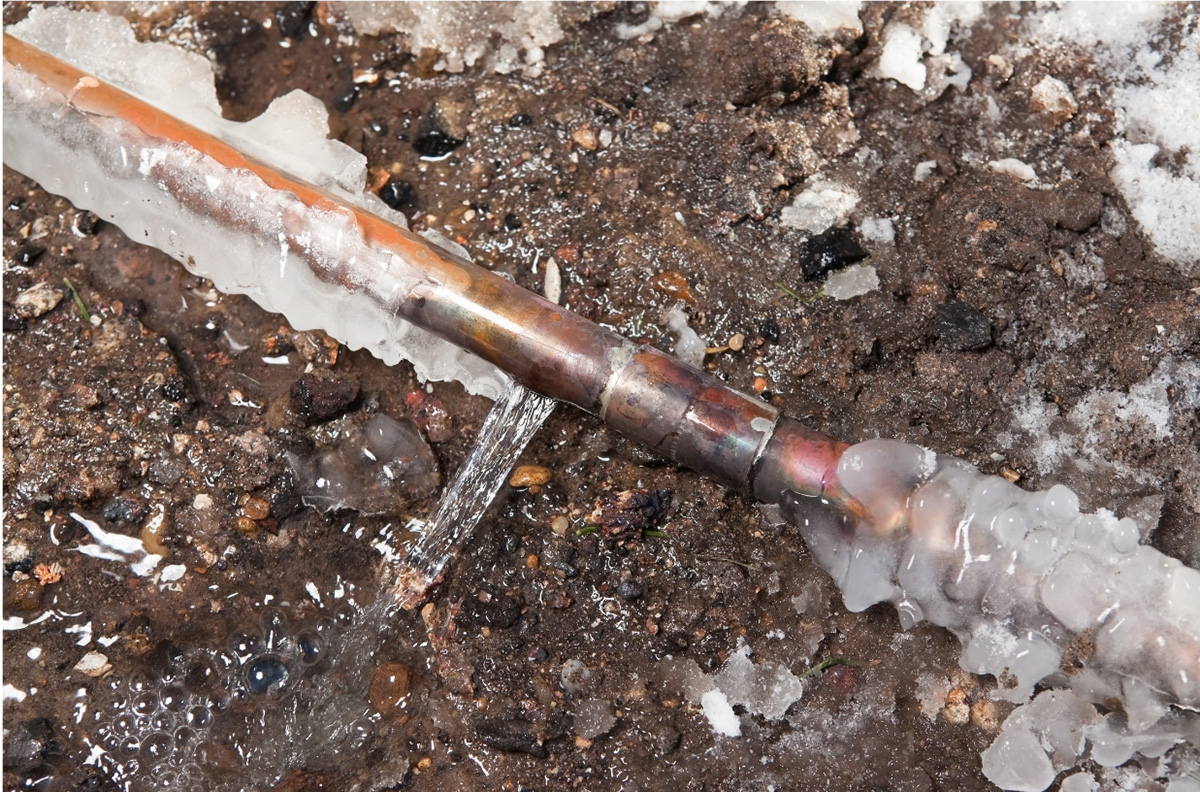Protecting Your Pipes from Freezing Issues: Essential Approaches
Protecting Your Pipes from Freezing Issues: Essential Approaches
Blog Article
What are your ideas about Prevent Frozen Pipes ?

Cold weather can wreak havoc on your plumbing, especially by freezing pipelines. Here's how to prevent it from taking place and what to do if it does.
Introduction
As temperatures decrease, the danger of frozen pipes increases, potentially resulting in expensive fixings and water damage. Understanding how to avoid frozen pipelines is important for home owners in chilly environments.
Avoidance Tips
Shielding vulnerable pipes
Wrap pipelines in insulation sleeves or use warmth tape to safeguard them from freezing temperatures. Concentrate on pipelines in unheated or external locations of the home.
Home heating strategies
Keep interior spaces adequately heated, especially locations with plumbing. Open cupboard doors to enable cozy air to circulate around pipelines under sinks.
Exactly how to identify frozen pipelines
Seek decreased water flow from taps, uncommon odors or sounds from pipes, and visible frost on revealed pipes.
Long-Term Solutions
Architectural modifications
Consider rerouting pipelines far from outside wall surfaces or unheated areas. Include added insulation to attics, basements, and crawl spaces.
Updating insulation
Purchase top quality insulation for pipelines, attic rooms, and walls. Proper insulation helps preserve regular temperatures and lowers the risk of frozen pipes.
Protecting Outdoor Plumbing
Garden hoses and exterior taps
Separate and drain pipes yard hoses prior to winter months. Set up frost-proof faucets or cover outside faucets with protected caps.
Recognizing Icy Pipes
What triggers pipes to freeze?
Pipelines ice up when revealed to temperature levels listed below 32 ° F (0 ° C) for expanded durations. As water inside the pipelines ices up, it broadens, putting pressure on the pipe walls and possibly causing them to burst.
Threats and problems
Icy pipelines can result in water disruptions, property damage, and costly fixings. Burst pipelines can flooding homes and cause comprehensive architectural damage.
Signs of Frozen Pipes
Identifying frozen pipes early can stop them from breaking.
What to Do If Your Pipes Freeze
Immediate activities to take
If you suspect frozen pipelines, maintain taps available to soothe pressure as the ice melts. Make use of a hairdryer or towels taken in hot water to thaw pipelines slowly.
Final thought
Avoiding frozen pipelines calls for aggressive actions and fast responses. By understanding the reasons, indications, and preventive measures, property owners can protect their plumbing throughout winter.
6 Proven Ways to Prevent Frozen Pipes and Protect Your Home
Disconnect and Drain Garden Hoses
Before winter arrives, start by disconnecting your garden hoses and draining any remaining water. Close the shut-off valves that supply outdoor hose bibs and leave the outdoor faucet open to allow any residual water to drain. For extra protection, consider using faucet covers throughout the colder months. It’s also important to drain water from any sprinkler supply lines following the manufacturer’s directions.
Insulate Exposed Pipes
Insulating your pipes is an effective way to prevent freezing. Pipe insulation is readily available at home improvement stores and is relatively inexpensive. Pay close attention to pipes in unheated areas such as the attic, basement, crawl spaces, or garage. Apply foam insulation generously to create a buffer against the cold. You can also wrap your pipes in heat tape or thermostat-controlled heat cables for added warmth.
Seal Air Leaks
Inspect your home for any cracks or openings that could let in cold air. Seal any holes around the piping in interior or exterior walls, as well as the sill plates where your home rests on its foundation. Additionally, make sure to keep your garage door closed unless you’re entering or exiting. Leaving it open creates a significant air leak that can lead to frozen pipes.
Allow Warm Air Circulation
During cold snaps, it’s essential to allow warm air to circulate evenly throughout your home. Leave interior doors ajar to promote better airflow. Open kitchen and bathroom cabinets to help distribute heat consistently around the rooms. If you have small children or pets, be sure to remove any household chemicals or potentially harmful cleaners from open cabinets for safety.
Let Faucets Drip
A small trickle of water can make a big difference in preventing ice formation inside your pipes. When temperatures drop significantly, start a drip of water from all faucets served by exposed pipes. This continuous flow helps prevent the water from freezing. Additionally, running a few faucets slightly can relieve pressure inside the pipes, reducing the chances of a rupture if the water inside does freeze.
https://choateshvac.com/6-proven-ways-to-prevent-frozen-pipes-and-protect-your-home/

We had been made aware of that report about How to Prevent Your Pipes From Freezing through an acquaintance on another web address. Do you know another individual who is excited about the subject? Be sure promote it. Thanks so much for going through it.
Click Here To Read More Report this page